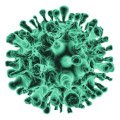A growing body of research is shedding light on the hidden impact of PFAS—a class of synthetic chemicals often called “forever chemicals”—on human health. These compounds are notoriously difficult to eliminate from the body, and they’ve been linked to a range of health issues. But a new study suggests that a surprisingly simple dietary change might help: eating more fiber.
What the Study Revealed
Researchers recently revisited blood samples from a group of 72 adult men with elevated cholesterol levels. The samples had originally been collected during a clinical trial that tested the effects of a high-fiber oat beverage on LDL (or “bad”) cholesterol. This time, scientists were looking for something different—levels of PFAS (per- and polyfluoroalkyl substances).
What they found was noteworthy: participants who consumed the high-fiber oat drink over a four-week period had significantly lower concentrations of long-chain PFAS in their blood compared to those who drank a lower-fiber rice milk alternative.
While the study was relatively small and focused on a specific population, it builds on earlier animal research and offers promising insights into how fiber might help the body excrete PFAS more effectively.
How Does Fiber Help with PFAS?
We already know that fiber is a nutritional powerhouse—it can lower cholesterol, aid digestion, and reduce the risk of several chronic diseases. But how exactly might it influence PFAS levels?
Fiber, especially soluble fiber, forms a gel-like substance in the digestive tract. This gel helps block the absorption of some dietary fats and cholesterol, carrying them out of the body. Scientists now believe this same mechanism could apply to PFAS compounds, binding them in the gut and preventing their reabsorption into the bloodstream.
“Just like fiber can bind cholesterol and keep it from being absorbed, fiber also likely binds PFAS and keeps it from being absorbed through the gut to the liver into the bloodstream and back again,” explained Dr. Kelly Johnson-Arbor, a medical toxicologist at MedStar Georgetown University Hospital, who was not involved in the study.
What Are PFAS, and Why Are They So Concerning?
PFAS have earned the nickname “forever chemicals” because of their remarkable resistance to breaking down. Originally introduced in the 1940s, these substances are widely used in nonstick cookware, waterproof clothing, food packaging, and stain-resistant materials.
Their widespread use means that an estimated 98% of Americans have detectable PFAS levels in their blood. The problem? These chemicals can accumulate over time and have been linked to hormonal disruptions, immune system effects, and increased risk of certain cancers.
Although some of the older, long-chain PFAS like PFOA and PFOS are no longer manufactured in the U.S., they remain in the environment—and in our bodies—for years. Newer PFAS varieties are believed to exit the body more quickly, but their long-term health effects are still being studied.
Should You Be Adding More Fiber to Your Diet?
Whether or not you’re concerned about PFAS, adding more fiber to your diet is almost always a smart move. Dietary fiber is known to help regulate blood sugar, promote a healthy gut, and reduce the risk of conditions like type 2 diabetes, heart disease, and colorectal cancer.
Health experts recommend that adults aim for 25 to 30 grams of fiber per day, yet most Americans fall well short of that goal. Whole grains, legumes, fruits, vegetables, and nuts are all excellent sources of dietary fiber.
If you’re planning to increase your fiber intake, do so gradually to avoid digestive discomfort like bloating or gas. Drinking plenty of water alongside your fiber-rich meals can also help ease the transition.
Other Ways to Lower Your PFAS Exposure
While boosting your fiber intake might help reduce PFAS in your body, it’s only one piece of the puzzle. There are also several practical steps you can take to limit your exposure:
- Filter your drinking water: Certain home filtration systems, like activated carbon or reverse osmosis units, can significantly reduce PFAS levels in tap water.
- Avoid nonstick cookware: Opt for alternatives like stainless steel, ceramic, or cast iron.
- Be cautious with stain-resistant products: Fabrics, carpets, and furniture labeled as “stain-resistant” often contain PFAS coatings.
- Check product labels: PFAS may also be found in some cosmetics and food packaging.
Looking Ahead
While more research is needed to confirm how effectively fiber can help reduce PFAS levels in a broad population, this new study adds a hopeful note to an otherwise concerning topic. In the face of environmental chemicals that are hard to avoid and harder to eliminate, dietary choices like eating more fiber may offer a simple, affordable line of defense.
Until further studies offer more definitive guidance, one thing is clear: fiber isn’t just good for your gut—it might also be good for your chemical load.






